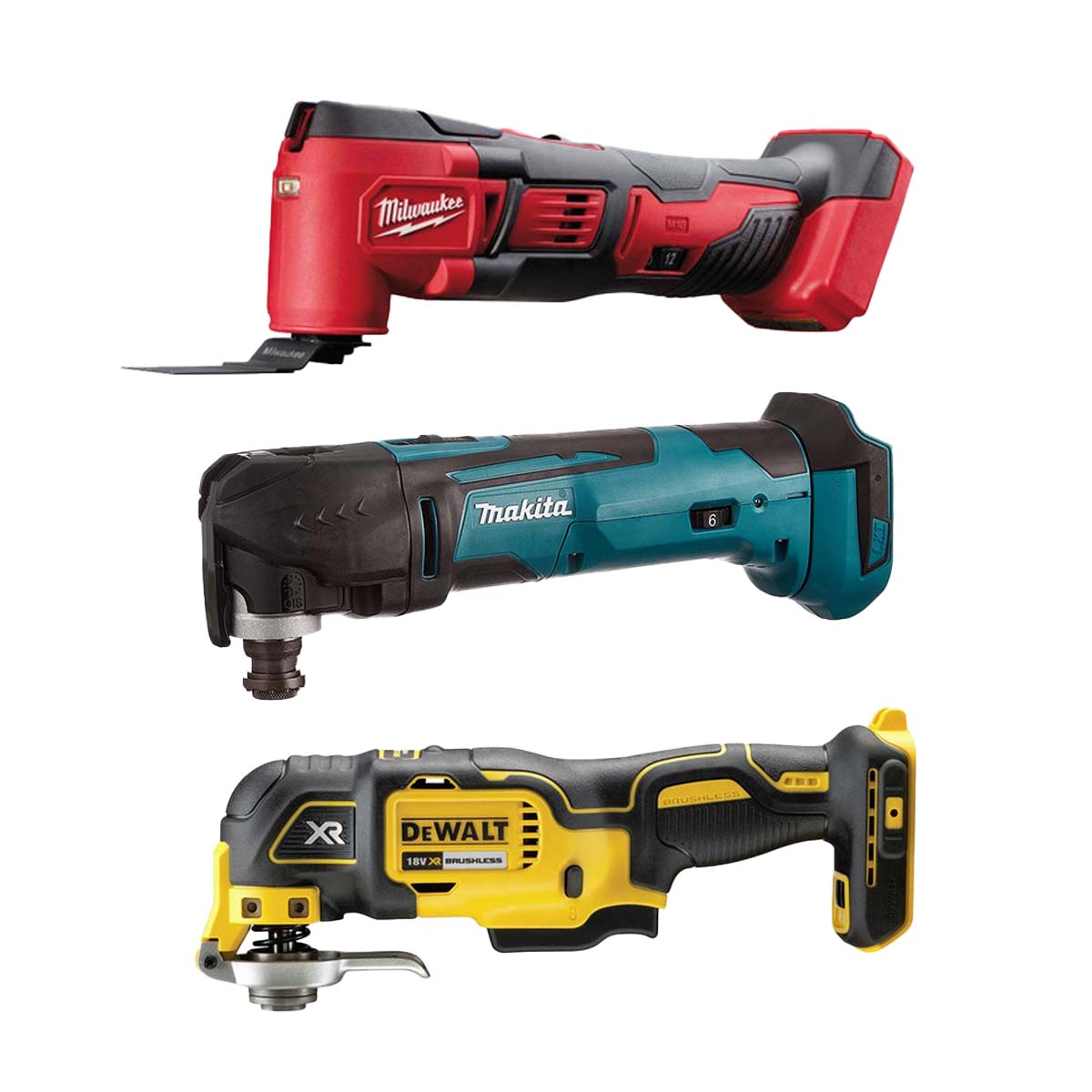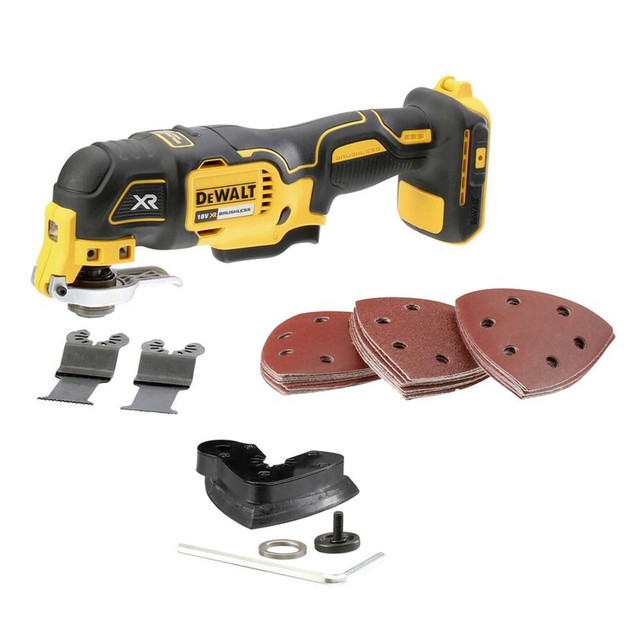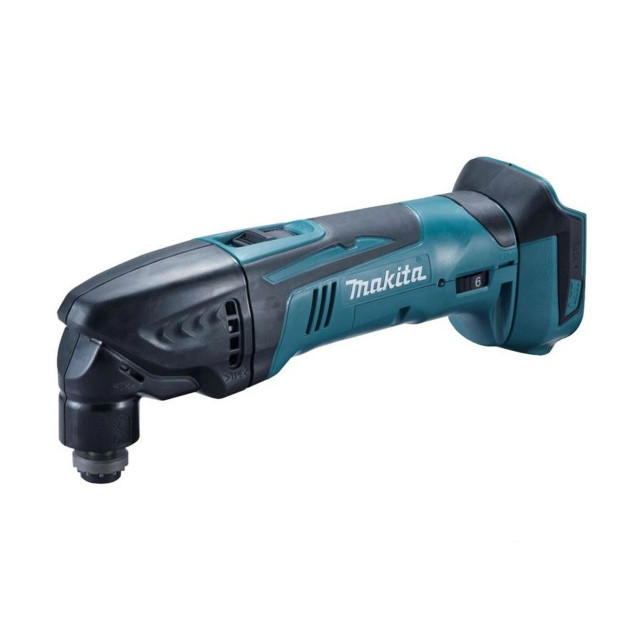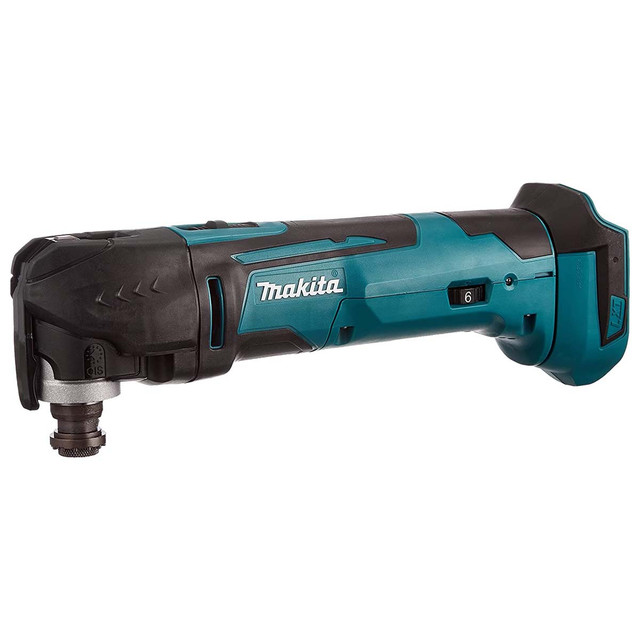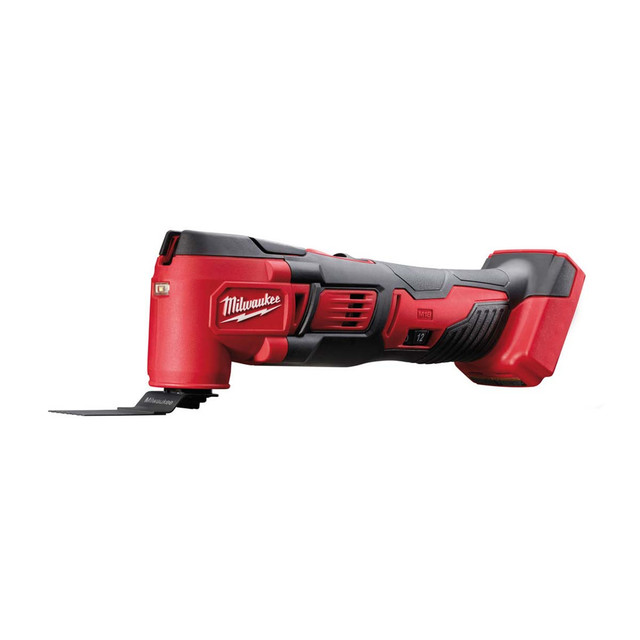Multi-Tool Mastery: What Can You Do with an Oscillating Multi-Tool?

Oscillating multi-tools (often just called multi-tools) are beloved by DIY enthusiasts and professionals alike for their incredible versatility. These tools use a rapidly oscillating blade or accessory to tackle tasks that would otherwise require several different tools. With a single multi-tool, you can cut, sand, grind, scrape, and more – even in tight spots other tools can’t reach. In this guide, we’ll explore expert tips on using an oscillating multi-tool safely and effectively, and compare four popular 18V cordless models (from DeWalt, Makita, and Milwaukee) to help you choose the right one for your needs. Get ready to unlock multi-tool mastery and make the most of this do-it-all device!
What Is an Oscillating Multi-Tool?
An oscillating multi-tool is a compact power tool whose head vibrates about 3° at high speed, driving interchangeable blades, sanding pads, scrapers and more. Because it oscillates rather than spins, it can make flush cuts, detail-sand and scrape in tight or awkward spaces, letting one motor unit tackle jobs from woodwork and drywall to grout removal, paint scraping, plumbing and flooring.
Why Have a Multi-Tool in Your Kit?
- Versatility in one body: Swap blades, pads or scrapers to cut timber, metal, plastic or plasterboard, then sand, grind or remove sealant without changing tools or clearing bench space.
- Works where others won’t: The slim head and small 3° stroke reach tight corners—inside cabinets, under door jambs, behind pipes—so you can flush-cut, notch or trim in awkward spots.
- Fast and efficient: One grab-and-go tool handles jobs that would normally need several, speeding up tasks like under-cutting skirting for flooring or trimming architrave.
- Controlled precision: Variable speed and low kick-back let you plunge-cut cleanly or make tidy square holes without over-cutting surrounding material.
- Battery platform friendly: Most cordless models slot straight into popular 18 V ranges (DeWalt XR, Makita LXT, Milwaukee M18), so you share batteries and chargers.
Essential Uses: What Can You Do with a Multi-Tool?
Oscillating multi-tools accept a wide range of accessories, opening the door to countless jobs. Here are the main tasks you can tackle:
- Cutting: Make rapid cuts through wood, plywood, plastic, PVC, plasterboard, and even light metals such as copper pipes or nails with the right blade. It’s perfect for trimming door-jamb bottoms in place or cutting a neat opening in plasterboard for an electrical box.
- Sanding: Add a sanding pad to convert the tool into a detail sander that smooths wood, plastic, or metal and reaches corners that larger sanders can’t. Ideal for refinishing furniture or sanding window frames without removing them.
- Grinding: Fit a grinding accessory to shape or dress metal, concrete, or stone. While not as powerful as a dedicated grinder, it excels at quick touch-ups, removing sharp edges, or tidying small welds.
- Scraping: Attach a scraper to lift old adhesive, caulk, paint, or carpet glue. The oscillating action quickly peels flaking paint or silicone without gouging the surface.
- Polishing: With a polishing pad, buff metal or plastic to a shine—handy for restoring oxidised headlight covers or brightening hardware.
Comparing Top 18V Cordless Oscillating Multi-Tools
Now, let’s look at some of the best-known cordless oscillating multi-tools on the market and see how they stack up. We’ll compare four popular 18V models head-to-head:
- DeWalt DCS355N 18V XR (Brushless Oscillating Multi-Tool, typically comes in a kit with 29 accessories)
- Makita DTM50Z 18V LXT (Cordless Multi-Tool, “Body Only” – an entry-level model in Makita’s range)
- Makita DTM51Z 18V LXT (Cordless Multi-Tool, “Body Only” – upgraded model with tool-less blade change)
- Milwaukee M18 BMT-0 18V (Compact Multi-Tool, “Body Only” – part of Milwaukee’s M18 system)
All four are quality tools used by tradespeople and serious DIYers. To help you at a glance, the table below highlights their key features and differences:
| Feature | DeWalt DCS355N (XR) | Makita DTM50Z (LXT) | Makita DTM51Z (LXT) | Milwaukee M18 BMT-0 |
|---|---|---|---|---|
| Motor | Brushless – high efficiency (XR series) | Brushed (classic motor) | Brushed (improved model over DTM50) | Brushed (Milwaukee FUEL = brushless, this model is not) |
| Oscillation Speed | 0–20,000 OPM (variable-speed trigger) | 6,000–20,000 OPM (dial control) | 6,000–20,000 OPM (dial control) | 12,000–18,000 OPM (12-speed dial) |
| Oscillation Angle | ~3.2° total arc (1.6° each side) | 3.2° total (standard oscillation) | 3.2° total (standard oscillation) | 3.4° total (slightly wider arc for faster cutting) |
| Blade Change | Tool-Free Quick-Change lever (no wrench needed) | Hex wrench required (accessory bolt) | Tool-Free lever (quick release) | Tool-Free (Milwaukee FIXTEC lever) |
| Weight (Bare Tool) | ~1.1 kg (very lightweight) | ~1.4 kg (without battery) | ~1.5 kg (without battery) | ~1.7 kg (without battery) |
| Included Accessories | 29-piece kit (blades, sanding pad, adapter, etc.) | Typically none (body-only; hex key included) | Typically none (body-only, sometimes a few accessories in bundle) | Usually includes a blade and sanding pad; also has depth stop & dust-extraction adapters in box |
DeWalt DCS355N 18V XR Multi-Tool (Brushless)
A compact 1.1 kg body houses DeWalt’s brushless motor, giving up to 57 % more run-time and longer service life. The dual-grip variable-speed trigger (0–20 000 opm) offers fingertip control for delicate starts and plunge cuts, while a bright LED lights the work-area. DeWalt’s tool-free Quick-Change lever and universal adaptor let you swap almost any brand’s blades, pads or scrapers in seconds. Often supplied with a 29-piece accessory kit, it’s an ideal upgrade for anyone on the DeWalt 18 V platform who wants a durable, pro-grade all-rounder with minimal faff.
Makita DTM50Z 18V LXT Multi-Tool (Body Only)
- Solid all-rounder at a keen price for anyone on Makita’s 18 V LXT batteries.
- Variable speed dial (6 000–20 000 opm) and soft-start give smooth, controlled cuts and sanding.
- 3.2° oscillation arc, 300 W max output—plenty for everyday cutting, scraping and sanding.
- Hex-wrench blade clamp: slower than tool-less systems but proven and secure (wrench stores on the body).
- OIS accessory interface accepts Makita, Bosch and generic blades; optional dust-extraction shoe available.
- Practical touches: LED work-light, 12-position blade indexing, rubberised grip; weighs about 1.4 kg bare.
- Sold body-only with minimal accessories—budget for extra blades. Ideal as a dependable, light-to-medium-duty workhorse if quick blade swaps aren’t a priority.
Makita DTM51Z 18V LXT Multi-Tool (Body Only)
- Tool-less blade changes: Lever-style clamp swaps accessories in seconds, a huge time-saver over the hex-wrench DTM50.
- Strong, adjustable performance: 6 000–20 000 opm via thumb-dial, 3.2 ° swing, and about 390 W peak output; soft-start, anti-restart, and low-battery indicator built in.
- Versatile fit: OIS interface accepts most generic and Bosch/Makita blades; 12 mounting angles for tricky spaces.
- Practical build: Rugged Makita housing, LED work-light, rubberised grip; roughly 1.5 kg bare.
- Bare tool only: Batteries, charger and blade set sold separately.
Best for Makita users who change attachments often and want pro-grade convenience without stepping up to pricier brushless Starlock models.
Milwaukee M18 BMT-0 18V Multi-Tool (Body Only)
- M18 platform, 12-speed dial (12 000–18 000 opm) and a 3.4 ° swing for brisk cutting and sanding.
- FIXTEC tool-free clamp, LED work light and on-tool battery gauge for quick, fuss-free use.
- Ships with a depth-stop and dust-extraction adaptors plus starter blade and sanding pad—ideal for precise, cleaner site work straight out of the box.
- Sturdy, jobsite build with overload protection; heaviest here at roughly 1.7 kg and a little bulkier, but tough enough for daily abuse.
Best for Milwaukee users who want a rugged, all-round cordless multi-tool with useful pro accessories; upgrade to the brushless FUEL model if you need extra power and lower vibration.
Frequently Asked Questions (FAQ)
Are oscillating multi-tool blades universal?
Multi-tool blades aren’t fully universal. Most tools use either the older OIS fitting (common on Makita and DeWalt) or the newer Starlock system from Bosch/Fein. Always check that a blade lists your tool’s mount; many kits include an adaptor to mix brands. “Universal” third-party blades can help, but quality varies, so invest in better blades for demanding jobs.
Can an oscillating multi-tool cut brick or concrete?
Yes—fit a diamond-grit blade labelled for tile or cement. It will cut grout, ceramic, or make shallow notches in brick or concrete, but progress is slow and stresses the tool, so work with light pressure and a fully charged 18 V battery. Wear eye protection and a dust mask, and expect plenty of dust. For anything deeper or extensive, use an angle grinder or masonry saw instead.
How do I use an oscillating multi-tool effectively?
- Fit the correct accessory and lock it securely.
- Select a speed: high for most cuts, medium-low for sanding or delicate work.
- Secure the workpiece, line up the blade and grip the tool firmly.
- Start cutting or sanding: apply light, steady pressure and, for cutting, use a gentle rocking motion; keep the pad flat when sanding.
- Control and pause as needed: ease off if vibration rises or the motor strains.
- Switch off, let the blade stop, then inspect your work or swap attachments.
If you have any additional queries, please do not hesitate to contact us below:

